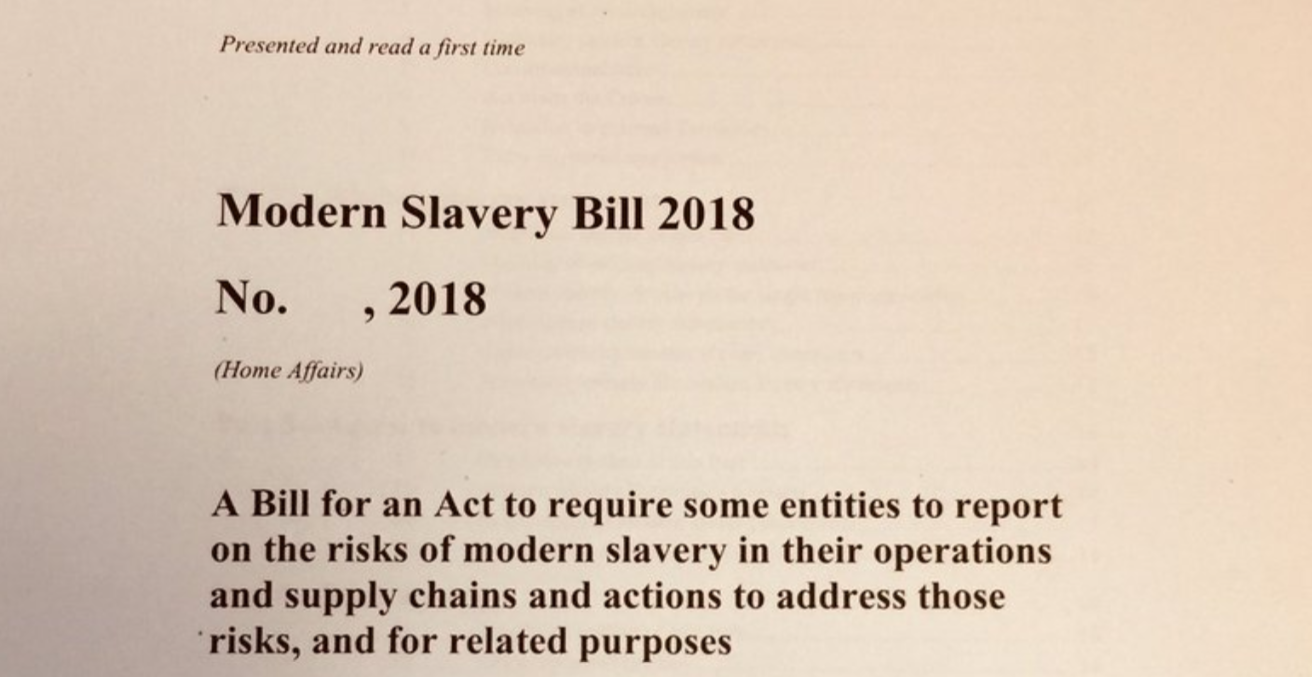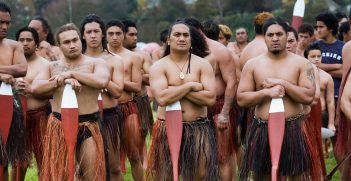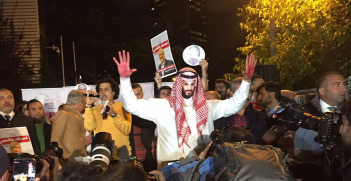The Modern Slavery Act: Did Australia get it Right?

Despite having a robust body of laws to deal with trafficking, labour exploitation and slavery-like conditions, Australia was quick to import the modern slavery legislative model from the United Kingdom.
Australia has a relatively robust set of laws to address issues of labour exploitation, trafficking and slavery-like conditions suffered by an estimated 4,300 people in Australia (although I am generally sceptical about trafficking-related estimates). It was therefore surprising that Australia borrowed the idea of a Modern Slavery law from the UK, enacting the Modern Day Slavery Act at the Federal level on 29 November. The Commonwealth law followed NSW which introduced its Modern Slavery Act in August.
The law establishes an obligation for large businesses to report on the risks of “modern slavery” in their operations and supply chains. The federal reporting obligations – which I believe are too soft – are not accompanied by penalties, as in the NSW Act. At the eleventh hour, the Senate introduced a naming and shaming clause. The responsible Minister can request an explanation from businesses that fail to report or improve their compliance and publish the name of these companies, as well as details of their non-compliance.
Australian consumers and businesses may be benefiting from food, medicine, clothes, cars and many more consumables produced by businesses which may engage in exploitative practices at various stages of the supply chain. Yet, despite relatively strong praise from academic and NGO circles for the law’s attempt to address such exploitation, I have four key reservations.
Diluting the meaning of slavery
One of the law’s stated purposes is to give effect to Australia’s international obligations as defined by a series of international agreements, including the Palermo Protocol, Slavery Convention and Supplementary Slavery Conventions. The amalgamation of distinct concepts in the Australian law is problematic. “Modern slavery” is used in the law as an umbrella term to capture everything from slavery to trafficking to child labour to forced marriage, experiences that may or may not be akin to slavery and may not meet the legal definition of slavery. This use of a sensationalist umbrella term risks eroding our understanding of clearly defined legal norms.
Particularly odd was the recommendation of the Joint Standing Committee on Foreign Affairs, Defence and Trade, after its inquiry helped lead to the law’s enactment, that “modern slavery” should be used in the Act as a as a non-legal umbrella term with no legal value.
What about victims of regular exploitation?
The law, and the inquiry that led to it, were driven by the well-intentioned aim of ridding the world of exploitation. The horrendous treatment of workers in the Thai fishing industry or global garment brands profiteering from the exploitation of factory workers in Bangladesh understandably helped garner support for the law. Yet framing the issue as “slavery” changes the agenda which becomes about campaigning for a public response to the problem. It quickly becomes an issue of numbers and scale and less about individual cases and legal redress.
The end result is the exclusion of victims’ stories when they sit in the middle rather than the extreme end of the exploitation spectrum. The narrative shifts to one of “slaves” and “enslavement” rather than about the labour rights and violations of personal freedoms that are actually experienced, in different ways, by the individuals involved: from excessive work hours to underpayment of wages, from hazardous work to complete disregard for human dignity.
Tackling supply chain exploitation
The third and possibly most significant problem with the law is the inappropriate shift of the due diligence responsibility of determining if a human rights violation has taken place from the Australian Government to targeted businesses.
This could be justified if a company could influence a particular practice of one of its overseas suppliers in a way that the Australian government – given its jurisdictional limits – may not be able to do. However, the law’s potential to address supply change exploitation is doubtful on a significant scale. Global supply chains frequently involve multiple tiers and multiple source countries. For instance, Baptist World Aid Australia argues that businesses rarely know where their raw materials come from. Even sectors that have received an extremely high level of scrutiny on a global scale, such as the fishing industry in Southeast Asia, have failed to make significant headway in reducing exploitation. Australia’s minimalist legislative response – which only captures a sliver of industries involved in the supply chain and places the burden on those business to do their own self-reporting on rights violations – will only go a limited way towards delivering the needed change.
Diverting resources
Between 2004 and 2017, more than 750 human trafficking and slavery cases were referred to the Australian Federal Police. However, in the same time period, there have been only around 20 successful prosecutions.
Many reasons are given for why prosecutorial rates have been so low in Australia. I would add the deportation of foreign victims and witnesses found to be unlawfully in Australia as a further potential explanation. Yet, I have a hunch that the main reason lies elsewhere. If we look at the facts of successful prosecutions, all 20 reflect extreme and disturbing instances of exploitation: from child sexual exploitation to high levels of debt bondage involving multiple victims; from particularly restricted movements to extremely exploitative and unsanitary conditions of work. Sensationalist language affects victim identification by police, prosecutors, juries and the victims themselves. It is therefore unsurprising that extreme cases are successfully prosecuted and that less extreme cases sitting elsewhere in the spectrum of exploitation may not be.
The human rights of those affected
Supply chain exploitation should not be left unregulated so that it continues to fester and undermine the rights and working lives of individuals. Freedom from slavery is a fundamental human right, clearly articulated in international law, and a powerful campaigning tool. After all, who is “for” slavery? If we accept that the primary, although not the only, goal of regulation in whatever form it takes is to protect the rights of individuals, it is with that lens that we must analyse legislation. Unfortunately, adding the Modern Slavery Act to the existing body of regulations will have a limited effect on protecting the human rights of those most affected, diverting resources from existing laws and support services that could better aid victims.
Dr Ramona Vijeyarasa is a Chancellor’s Post-Doctoral Research Fellow in the Faculty of Law at the University of Technology Sydney. She previously worked for ActionAid International, the International Organisation for Migration, the Centre for Reproductive Rights and the International Center for Transitional Justice. She will be presenting her research at the Annual Conference of the Law and Society Association of Australia and New Zealand from 12-15 December 2018 at University of Wollongong.
This article is published under a Creative Commons Licence and may be republished with attribution.





